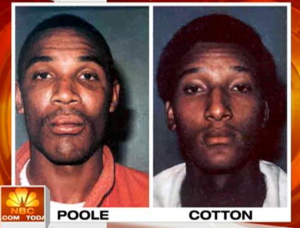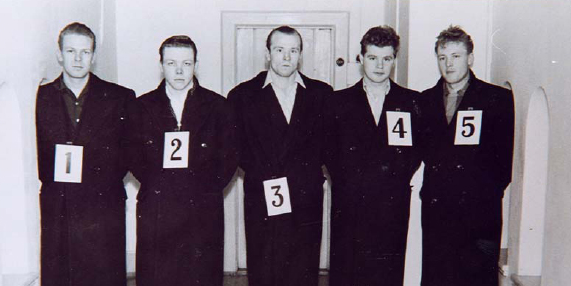Eyewitness testimony is far from being a form of scientific evidence and is in fact based on perhaps one of the most flawed tools available: human memory. Despite this, the testimony of eyewitnesses can still have an enormous bearing on the outcome of a criminal investigation but unfortunately, as we will see, this evidence can range from being mildly misleading to catastrophically incorrect. And when it is the matter of someone’s life and freedom on the line, the criminal justice system cannot afford to get it wrong.
So let’s delve into a case that shows some of the great flaws of eyewitness accounts and how they can lead to devastating consequences if not treated with care.
The Case
One night in North Carolina in 1984, 22-year-old student Jennifer Thompson lay unsuspectingly in her bed when an assailant broke in, held a knife to her throat and raped her. During the ordeal, Thompson decided that she would try to remember as much about her attacker as she could, hoping to run straight to the police and get this man identified. So she took in everything she could about his face, skin colour, hair, height, weight and voice. She was convinced that she had etched this person’s image onto her brain.
Later at the police station, an investigating officer sat down with Thompson and the two of them produced a composite sketch of the rapist. This was enough for police to round up potential suspects. Thompson was later presented with a police line-up of six men (first by photograph and later a physical line-up), from which she picked out with “100 percent certainty” her attacker – a man named Ronald Cotton.
“Looking at a series of police photos, I identified my attacker. I knew this was the man. I was completely confident. I was sure”.
The suspect fit her description perfectly and he was already known to the police following a few other legal incidents, including attempted rape when he was 16. Cotton was tried, a trial at which Thompson looked him dead in the eye and declared that this was in fact the man who had raped her. Based on the victim’s testimony, and other pieces of circumstantial evidence, he was found guilty and sentenced to life imprisonment.

Source: http://www.today.com
Meanwhile in the prison where Cotton was being held, another inmate eventually joined the ranks, a man named Bobby Poole. Poole had been convicted of a series of violent rapes and was serving consecutive life sentences. Incidentally this man bore a striking resemblance to Cotton, so much so that prison staff were constantly getting them confused. Any alarm bells ringing? Cotton subsequently confirmed his suspicions and discovered that Poole was in fact the actual rapist of Thompson. This was enough to win Cotton a retrial, but when presented with the two men, Thompson once again stated that Cotton was the attacker and she had never before seen Poole, her actual attacker. Fortunately Cotton’s break came in 1995, when he heard about a new technique known as DNA analysis. Using a semen sample collected from Thompson at the time of the attack, DNA evidence was able to prove that Cotton was innocent and Poole was the actual rapist. Case closed.
The Problems with Eyewitness Identification
The consequences of mistaken identification can be disastrous, and the people affected by this error is larger than one might initially think. In this case, an innocent man of course spent over a decade of his life behind bars for a crime he did not commit, the implications of which do not even need to be stated. The victim must then live with the knowledge that, firstly, she is in a way responsible for the incarceration of this innocent man and, secondly, her actual attacker has been on the loose! Not to mention the effects on the family of both the victim and the wrongly accused. The range of those affected can then extend to anyone who has since been the victim of the actual criminal. In this case Poole went on to rape a series of women, crimes which perhaps may not have occurred had Cotton not been wrongfully charged, forcing police to continue their investigation.
So just how can a case of mistaken identity occur?
In this instance, the assailant was mere inches away from the victim’s face for a considerable length of time (a length of time that no doubt felt like a lifetime), and yet she still made an incorrect identification. How could this happen? There are a number of factors which are known to reduce the accuracy of eyewitness identifications, many of which can into play in Thompson’s case. Extreme stress when viewing the perpetrator and the presence of weapons at the scene can affect a person’s ability to remember and recall, as can racial differences between the perpetrator and the witness. A suspect’s lack of distinctive characteristics will render them more difficult to remember, and of course the person may be wearing some kind of disguise to hide their features. The viewing conditions can drastically affect eyewitness identification too, such as the distance between the witness and the suspect, the lighting in the environment, and the length of time the witness sees the suspect (Ellis et al, 1977). In the United Kingdom following a case in 1977 (R v Turnbull), a set of guidelines relating to cases involving eyewitness testimony were introduced. These guidelines were intended to assist members of the jury in treating eyewitness evidence with the care and attention required, taking into account the circumstances surrounding the identification by the witness.
Then there are the biases that can occur as a result of the management of the investigation. The police line-up itself can introduce prejudice from the start. Had it been somehow suggested to Thompson that the perpetrator was definitely somewhere in the line-up, she may have been far more likely to choose someone even if, as in this case, he was not actually there. The process of merely being asked to choose from a selection of faces can force people to choose incorrectly. Admittedly, Cotton and Poole did look very similar at first glance, just as many people in the world share looks to a certain extent. So in Cotton’s retrial, why would Thompson still point the finger at Cotton when her real attacker was stood right there? Because reinforcement can alter memory. After years of her positive identification of Cotton being reinforced, her memory had replaced her real rapist’s face with Cotton’s. Human memory is a funny old thing, and certainly can’t necessarily be trusted.
The eyewitness statement of a witness or victim is certainly not evidence based on science, and yet this evidence can often carry such weight that the pointing finger of a witness may as well be an airtight scientific report. The Ronald Cotton case was not a one-off incident in which eyewitness testimony failed. The list of cases of people being wrongfully convicted based on eyewitness testimony, only to be later exonerated, is far longer than it should be (in fact the Innocence Project states that eyewitness misidentification has played a role in over 70% of convictions which were later overturned by DNA evidence). Looking at all the flaws of eyewitness testimony and all the cases of wrongful conviction based on it, it makes you wonder whether eyewitness testimony has any place in the courtroom at all.
References
Eliis, H. D. et al. Experimental studies of face identification. Journal of Criminal Defense. 1977(3) pp. 219-234.
Hansen, M. Scoping out eyewitness ids. Am Bar Assoc J. 2001(87).
New York Times. ‘I was certain, but I was wrong’. [online] Available: http://www.nytimes.com/2000/06/18/opinion/i-was-certain-but-i-was-wrong.html
Scientific American. Why science tells us not to rely on eyewitness accounts. [online] Available: http://www.scientificamerican.com/article/do-the-eyes-have-it

